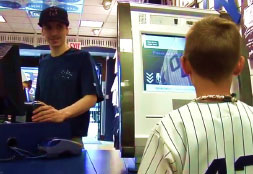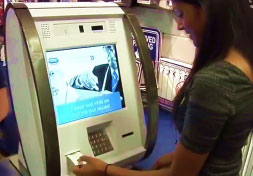Maintaining a banking presence in the face of branch closures
Banks throughout Europe, the United States and Australia are feeling the pinch due to low interest rates and slow-growth economies. These pressures are forcing banks to take action and drastically cut their business costs.
Meanwhile, digitalization has seen more and more customers choose the convenience of banking online instead of going to the bank branch. So it’s hardly surprising that many banks believe the obvious answer is to slash the number of bank branches, with those in rural and remote areas often the first to go.
Bank closures in numbers
European Union (in 2016)
United States (since 2008)
Australia (in 2016)
Banks around the world need to provide financial services in all regions, including economically underdeveloped areas, and ensure the provision of banking services to all.
The president of The World Bank, Jim Yong Kim, has called for Universal Financial Access by the year 2020, stating that “financial inclusion is a key enabler to reducing poverty and boosting prosperity”.
The World Bank defines financial inclusion as giving “individuals and businesses access to useful and affordable financial products and services that meet their needs – transactions, payments, savings, credit and insurance”.
Financial inclusion is a key enabler to reducing poverty and boosting prosperity.
- Jim Yong Kim, President of The World Bank
Providing financial services in areas that are difficult to reach
The figures speak for themselves: European Union banks closed 9,100 branches last year; in the United States more than 10,000 have shut since 2008, with over 860 going in the first half of 2017 alone.
The decline is less marked in Australia, where banks, building society and credit union branch numbers fell by 315 to 5904 in the year to June 2016, but even there no-one’s denying that the future trend will be for fewer branches, not more.
Introducing the KAL RTM
A revolution in branch and branchless banking & financial services
Maintaining a point of presence
The KAL RTM has the advantage of being easy to set up, manage and maintain, and has a small footprint so it can be conveniently located in any retail environment including shops, restaurants and hotels. It gives banks a way to maintain a presence in communities where they cannot affordably provide branch or full ATM services.
The KAL RTM acts as an integrated banking system, offering transactions such as cash withdrawal, deposit, balance inquiry, bill payment, account transfer, account opening, mobile top-up and more, as well as giving access to a bank’s website and video conferencing with bank experts.
The Retail Teller Machine is also very inexpensive to run – in fact, its total cost of ownership is a fraction of the cost of an ATM. RTMs clearly meets a bank’s need to provide customer service while maintaining or cutting costs. The reason it’s so economical is because it has no cash stored inside, so there’s no need for armored services.

Delivering financial services with KAL’s RTM
For a bank that has reduced its number of branches, the KAL RTM can also serve as a means of promoting bank services with on-screen marketing messages to complement the campaigns delivered to customers via mobile and internet banking channels. In this way, the bank delivers a consistent message to market. The bank can also use the RTM’s large touch screen to sell its financial services and products.
One obvious problem with a reduction in bank branches, and one that customers often highlight, is the resulting drop-in service. This is especially the case when the customer needs to carry out more complicated transactions.
Using the KAL RTM’s assisted self-service function, customers can speak to a bank teller via video conference to help them with rarely done or more difficult transactions, open an account or receive advice on products.
For the customer, the KAL RTM provides a point of contact with the bank when branches and full ATM services are not an option.

